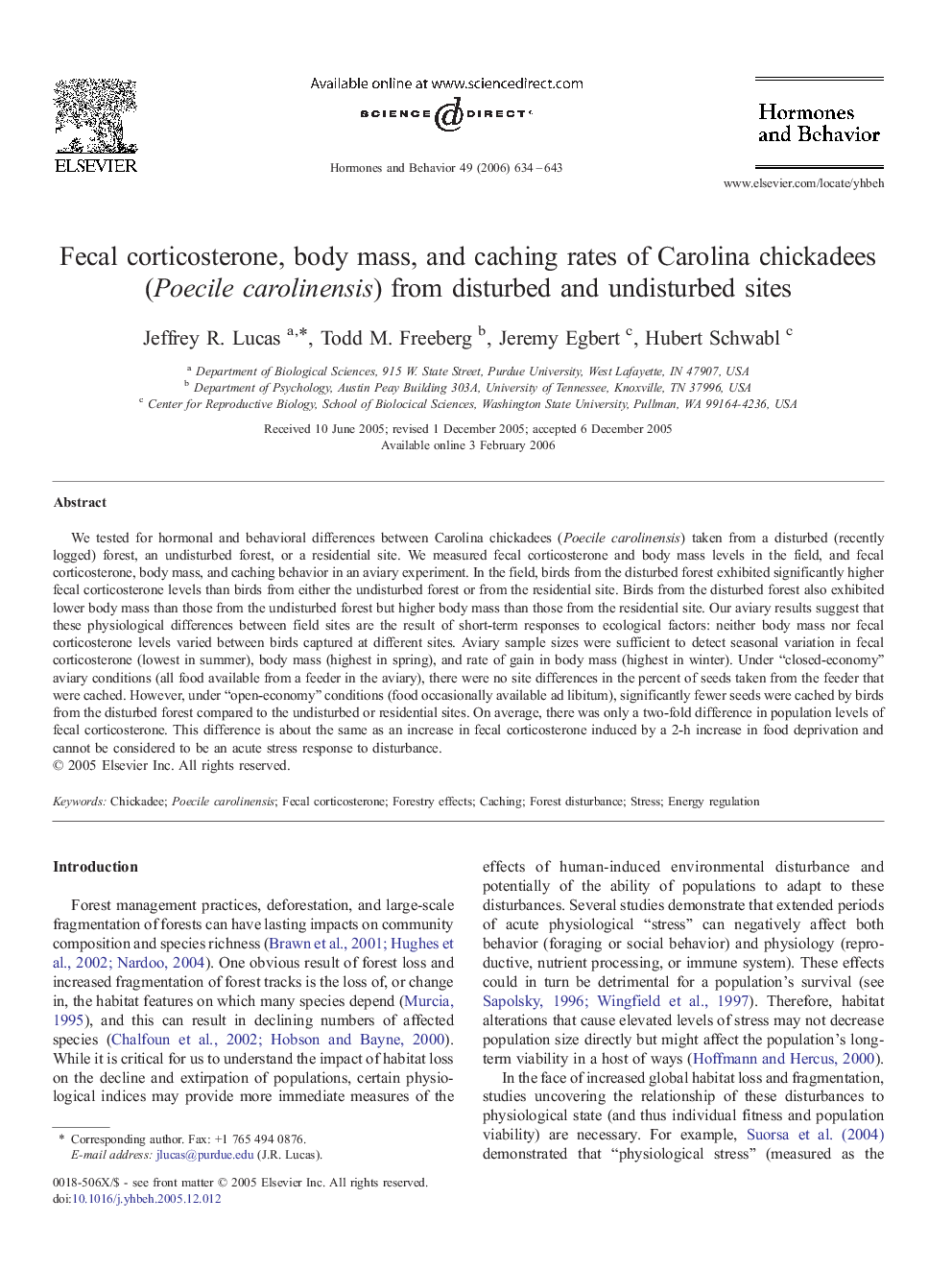| Article ID | Journal | Published Year | Pages | File Type |
|---|---|---|---|---|
| 323010 | Hormones and Behavior | 2006 | 10 Pages |
We tested for hormonal and behavioral differences between Carolina chickadees (Poecile carolinensis) taken from a disturbed (recently logged) forest, an undisturbed forest, or a residential site. We measured fecal corticosterone and body mass levels in the field, and fecal corticosterone, body mass, and caching behavior in an aviary experiment. In the field, birds from the disturbed forest exhibited significantly higher fecal corticosterone levels than birds from either the undisturbed forest or from the residential site. Birds from the disturbed forest also exhibited lower body mass than those from the undisturbed forest but higher body mass than those from the residential site. Our aviary results suggest that these physiological differences between field sites are the result of short-term responses to ecological factors: neither body mass nor fecal corticosterone levels varied between birds captured at different sites. Aviary sample sizes were sufficient to detect seasonal variation in fecal corticosterone (lowest in summer), body mass (highest in spring), and rate of gain in body mass (highest in winter). Under “closed-economy” aviary conditions (all food available from a feeder in the aviary), there were no site differences in the percent of seeds taken from the feeder that were cached. However, under “open-economy” conditions (food occasionally available ad libitum), significantly fewer seeds were cached by birds from the disturbed forest compared to the undisturbed or residential sites. On average, there was only a two-fold difference in population levels of fecal corticosterone. This difference is about the same as an increase in fecal corticosterone induced by a 2-h increase in food deprivation and cannot be considered to be an acute stress response to disturbance.
